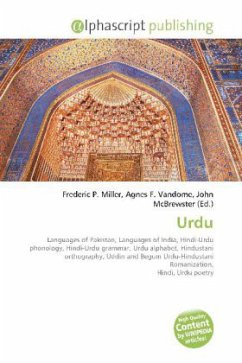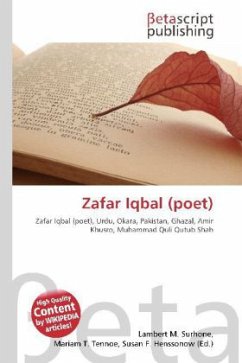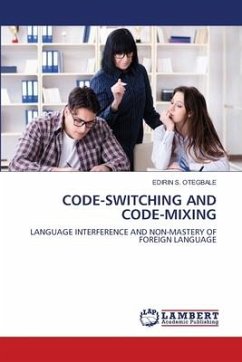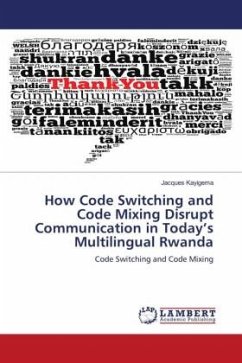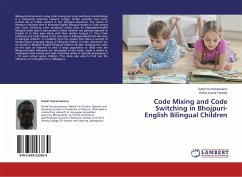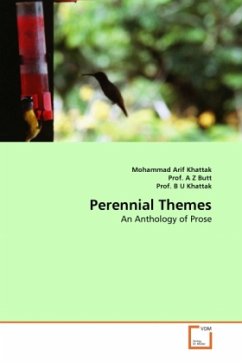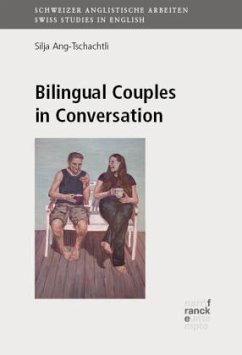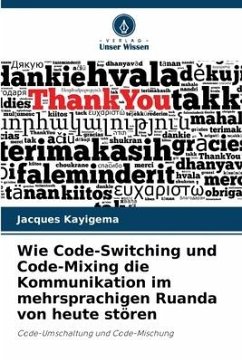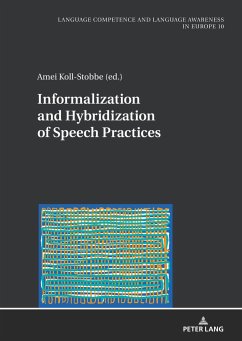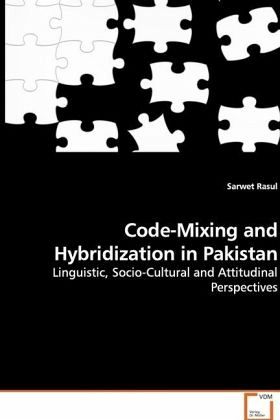
Code-Mixing and Hybridization in Pakistan
Linguistic, Socio-Cultural and Attitudinal Perspectives
Versandkostenfrei!
Versandfertig in 6-10 Tagen
52,99 €
inkl. MwSt.

PAYBACK Punkte
26 °P sammeln!
Code-mixing and language hybridization areinteresting phenomena in bilingual societies thatgain significance in the backdrop of globalization.In Pakistan too, they are a familiar feature of thecurrent linguistic scenario that is clearly reflectedin the media as well. This work aims at the study oflanguage hybridization and code-mixing of English inUrdu in Pakistan. To analyze linguistic,socio-cultural and attitudinal dimensions of codemixing, the research quantitatively and qualitativelyanalyzes the code-mixed linguistic patterns used bythe speakers in TV programmes i.e. talk shows anddiscussi...
Code-mixing and language hybridization are
interesting phenomena in bilingual societies that
gain significance in the backdrop of globalization.
In Pakistan too, they are a familiar feature of the
current linguistic scenario that is clearly reflected
in the media as well. This work aims at the study of
language hybridization and code-mixing of English in
Urdu in Pakistan. To analyze linguistic,
socio-cultural and attitudinal dimensions of code
mixing, the research quantitatively and qualitatively
analyzes the code-mixed linguistic patterns used by
the speakers in TV programmes i.e. talk shows and
discussion panels. Data is sorted under three broad
categories: Insertion, Hybridization and Synthesis.
Various lexical/structural categories are further
devised to study the processes employed, to examine
the frequency of occurrence, and to investigate
linguistic and social constraints involved. With the
help of this linguistic data the socio-cultural and
attitudinal implications of code-mixing and language
hybridization are also explored. The study would help
in understanding the phenomenon of code-mixing and
language hybridization in Pakistan.
interesting phenomena in bilingual societies that
gain significance in the backdrop of globalization.
In Pakistan too, they are a familiar feature of the
current linguistic scenario that is clearly reflected
in the media as well. This work aims at the study of
language hybridization and code-mixing of English in
Urdu in Pakistan. To analyze linguistic,
socio-cultural and attitudinal dimensions of code
mixing, the research quantitatively and qualitatively
analyzes the code-mixed linguistic patterns used by
the speakers in TV programmes i.e. talk shows and
discussion panels. Data is sorted under three broad
categories: Insertion, Hybridization and Synthesis.
Various lexical/structural categories are further
devised to study the processes employed, to examine
the frequency of occurrence, and to investigate
linguistic and social constraints involved. With the
help of this linguistic data the socio-cultural and
attitudinal implications of code-mixing and language
hybridization are also explored. The study would help
in understanding the phenomenon of code-mixing and
language hybridization in Pakistan.



